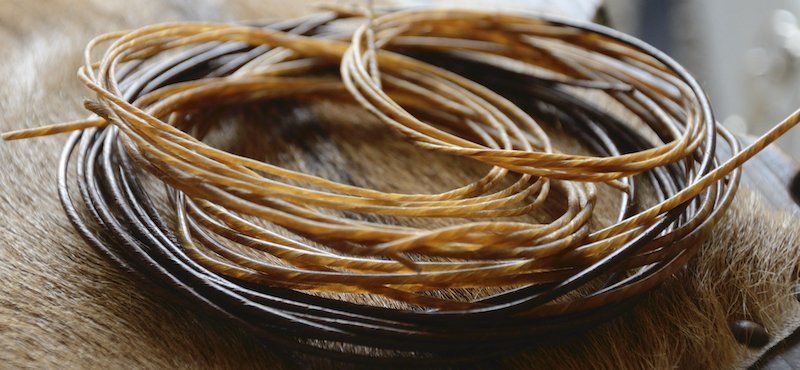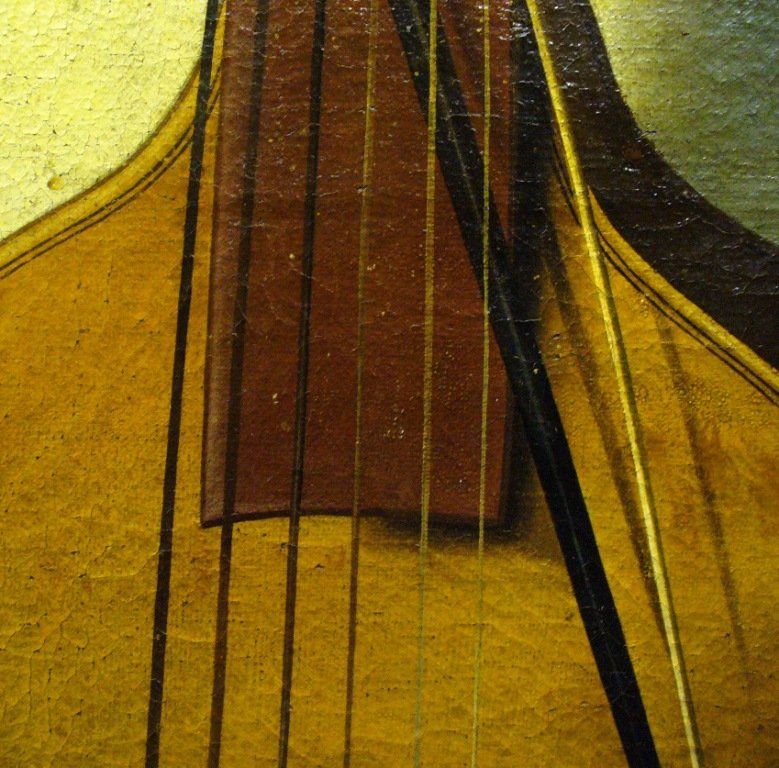Strings

The strings of bowed vihuelas and viols were made exclusively of animal gut. They constitute a crucial factor in the sound production and quality of those instruments. According to all known historical sources, such strings were made from ovine's gut, washed, twisted and left to dry.
«His autem chordis ex arietum intestinis communiter factis»
(Johannes Tinctoris, De Inventione et usu Musicae, Nápoles, 1481-83).
There were at least three different types of strings made of different types of gut: one was used specifically for the upper register, one for the middle and the other for the bass (the latter being of old ram’s gut), depending on their properties of elasticity and rigidity.

Gut strings are –due to the properties of the material of which they were made- probably the least that adulterate the natural sound of the wooden soundboard and resonance box of the bowed vihuelas and viols, whose thicknesses and structural characteristics were originally designed to function with said gut strings thus optimizing their performance.


These organic materials (woods, glues, gut strings ...) react to vibration excitation in a different way than artificial materials, occasionally producing interesting properties emerging at a critical point where they achieve their highest performance. In addition, these organic materials are always changing, evolving and adapting to environmental conditions, which makes their acoustical response more stable. Moreover, this acoustical response is most suitable to the essence of the music of that period in aspects such as sound volume –with bass and high registers balanced in specific function relative to the whole of the mass of sound and not as an independent entity in and of its own– harmony, articulation, color or nuance of sound.

There is no musical instrument more perfect than the human voice, therefore the ancients used it as a model to be imitated, the same holds true with the bowed vihuela. Vocal cords are a cartilaginous organic material based on collagen, akin to that found in gut.
The intervention of modern materials (plastic, metal wound, etc.) in the production of strings supposes an intentional attempt to adapt, or supposedly improve, the function of this sonorous substance to modern aesthetic psychology. This aesthetic differs from that of what the ancients conceived, which included an alchemical and spiritual component attributed to living materials. A vihuela with plastic strings (or metal wound) would cease to be an organically alive instrument that tries to imitate the song of the human voice.



